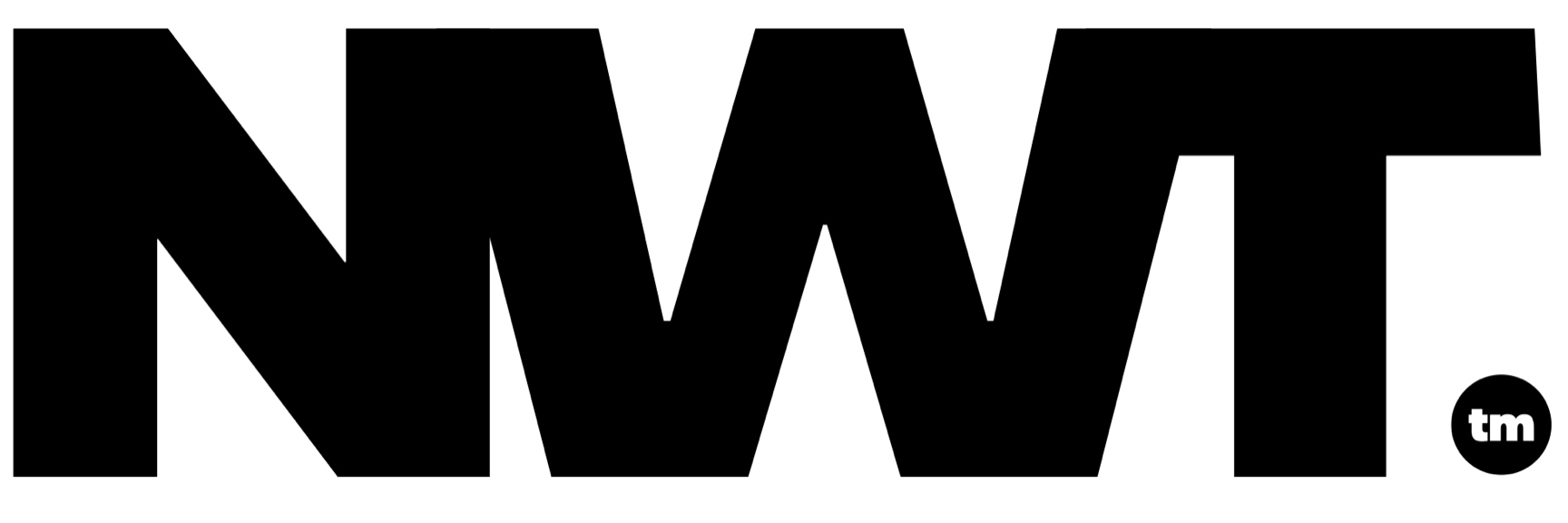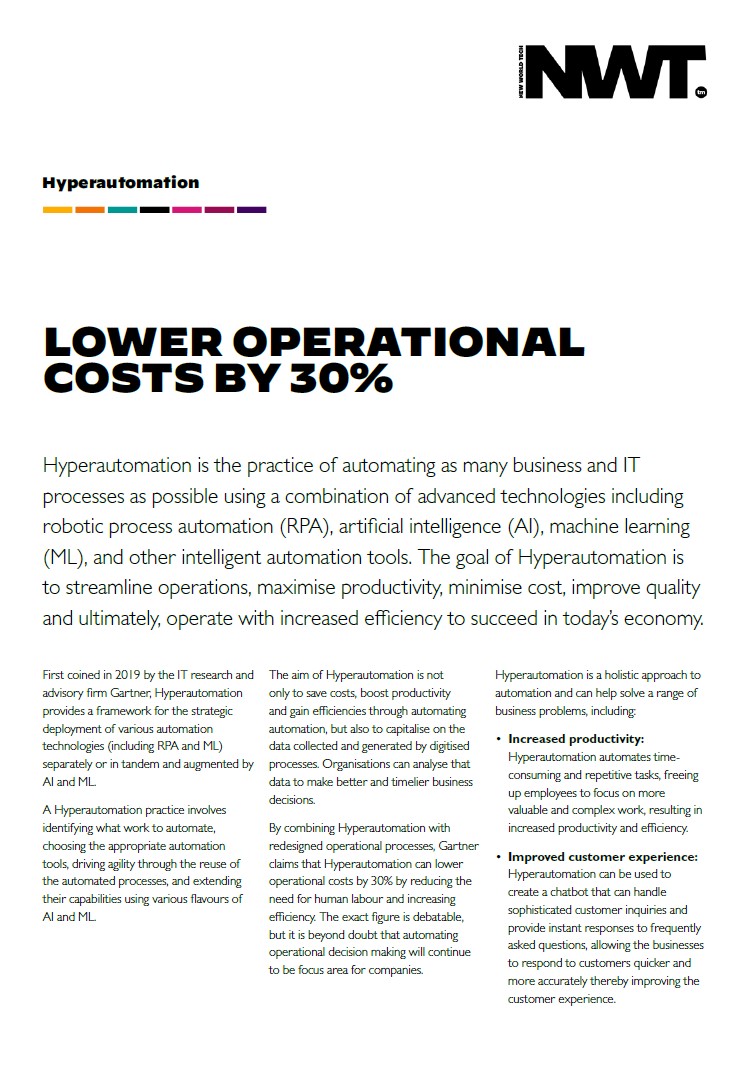HYPERAUTOMATION

HYPERAUTOMATION IS INCREASINGLY BEING USED BY BUSINESSES TO MAXIMISE PRODUCTIVITY, MINIMISE COST, IMPROVE QUALITY AND ULTIMATELY, OPERATE WITH INCREASED EFFICIENCY TO SUCCEED IN TODAY'S ECONOMY
WHAT IS HYPERAUTOMATION
WHY NWT?
First coined in 2019 by the IT research and advisory firm Gartner, hyperautomation provides a framework for the strategic deployment of various automation technologies (including RPA) separately or in tandem and augmented by AI and machine learning.
A hyperautomation practice involves identifying what work to automate, choosing the appropriate automation tools, driving agility through the reuse of the automated processes, and extending their capabilities using various flavours of AI and machine learning.
The aim of hyperautomation is not only to save costs, boost productivity and gain efficiencies through automating automation, but also to capitalise on the data collected and generated by digitised processes. Organisations can use that data to make better and timely business decisions.
WHY NWT?
NWT can help you to:
- Uncover your requirement through analysing your key processes and supporting data, whether structured or unstructured
- Understand where automation technologies can be used to improve your business transactions
- Understand where improved AI technologies and analytics can be used to improve your business decision-making
All of this is underpinned by our knowledge and experience in delivering successful projects and introducing a management of change approach.
NWT has key industry partners including ServiceNow, a leader in enterprise service management which is at the forefront of the Hyperautomation revolution, our ServiceNow practice can enable you to be successful. By providing comprehensive low-code automation solutions, ServiceNow places innovative automation into the hands of those who can do the most with it. NWT’s service is built on its award-winning Now Platform®, ServiceNow and NWT, are the ideal partners in achieving successful Hyperautomation.
Overall, Hyperautomation can help businesses improve efficiency, reduce costs, enhance the customer experience, and stay competitive in today’s rapidly changing business landscape. NWT’s services and partners can help you to successfully apply Hyperautomation to your business environment.
FREQUENTLY ASKED QUESTIONS
Leadership and sponsorship buy-in on a hyperautomation project can be difficult due to a lack of understanding, cost, resistance to change, fear of job loss, and misalignment with organisational objectives. To get over these challenges, it is essential to educate leaders, address their concerns, and demonstrate how hyperautomation can align with the organisational objectives. At NWT we can help you to overcome these challenges and give you a winning hyperautomation strategy that outlines to your business outcomes.
Hyperautomation encompasses the process of identifying tasks and associated workflows to automate, selecting the most suitable automation tools, leveraging the reusability of automated processes to drive benefits, and expanding capabilities by utilising AI and machine learning techniques.
Hyperautomation initiatives come in many different shapes and sizes and are being seen across a wide range of industries, from banking and insurance to manufacturing and healthcare.
Hyperautomation will make businesses more secure through the use of technology such as AI. There will be less reliance of people as processes will be automated. Automation will also uncover vulnerabilities and prioritise security risks and will be an important step to a proactive, self-secure business model
The purpose of hyperautomation is to improve your business processes and consequently speed up and improve your operations. A lot depends on the level of automation required and some projects may last years depending on the sponsorship and desire to change. Implementing multiple automation programs is the foundation of hyperautomation, meaning that it is a complex system by definition, and there is no one-size-fits-all approach, even within a single industry.



